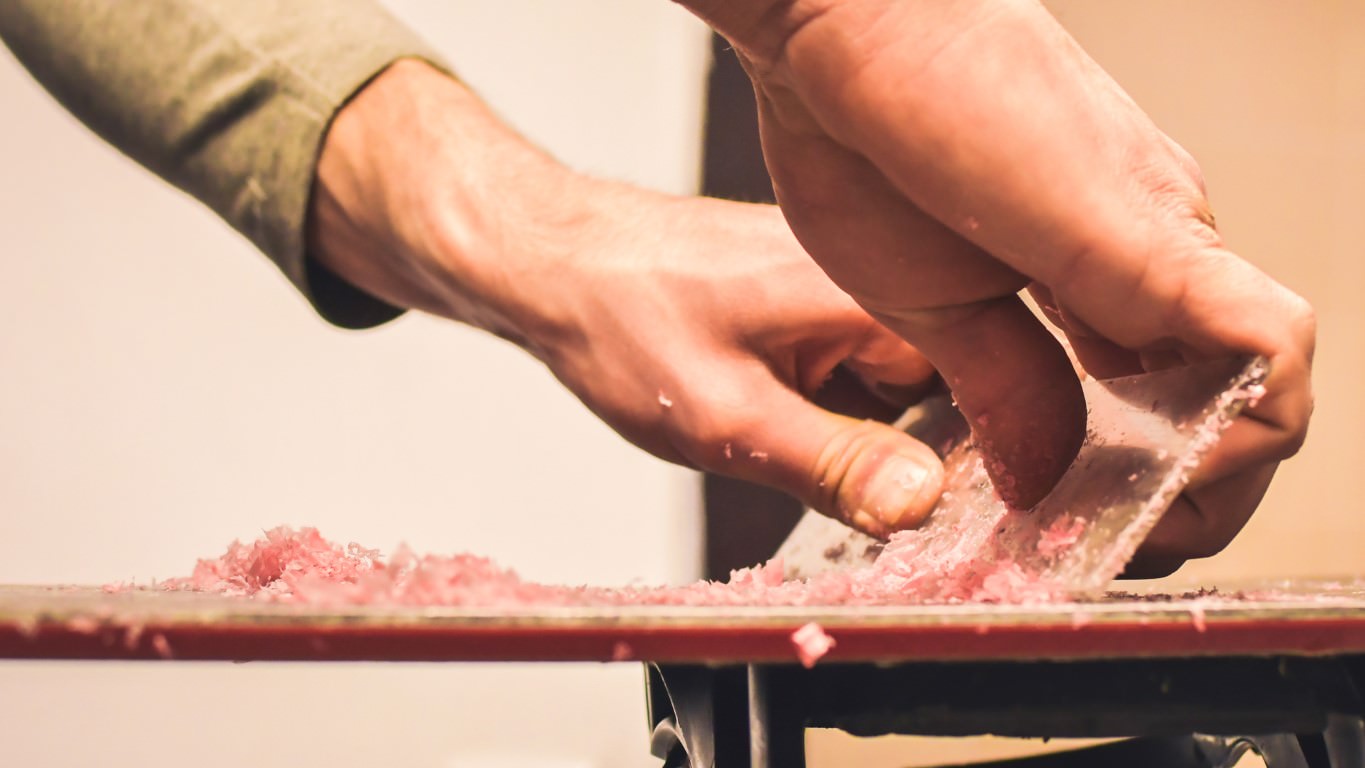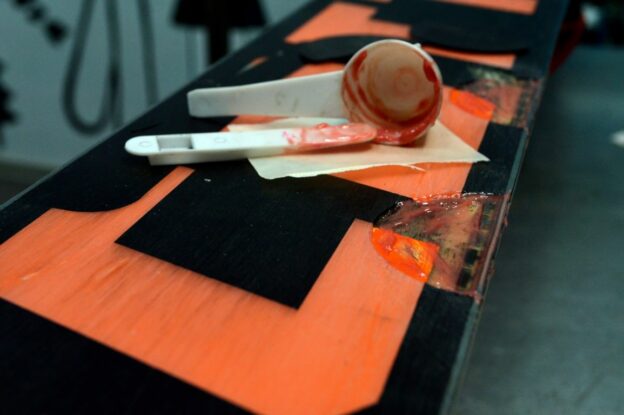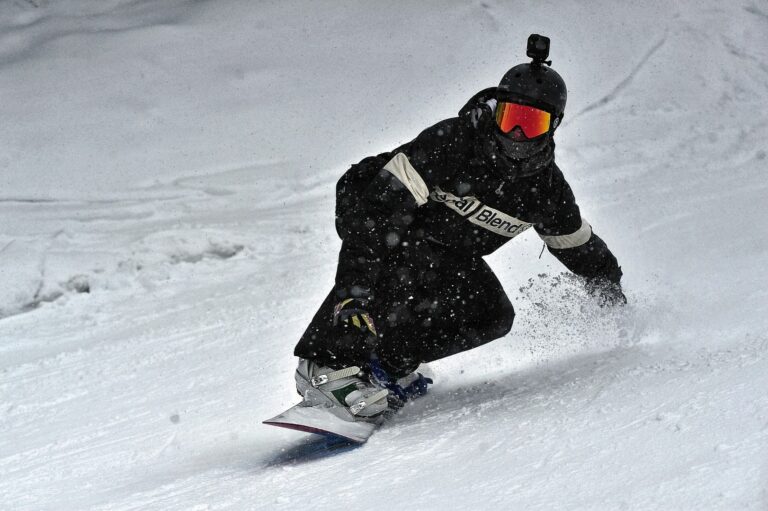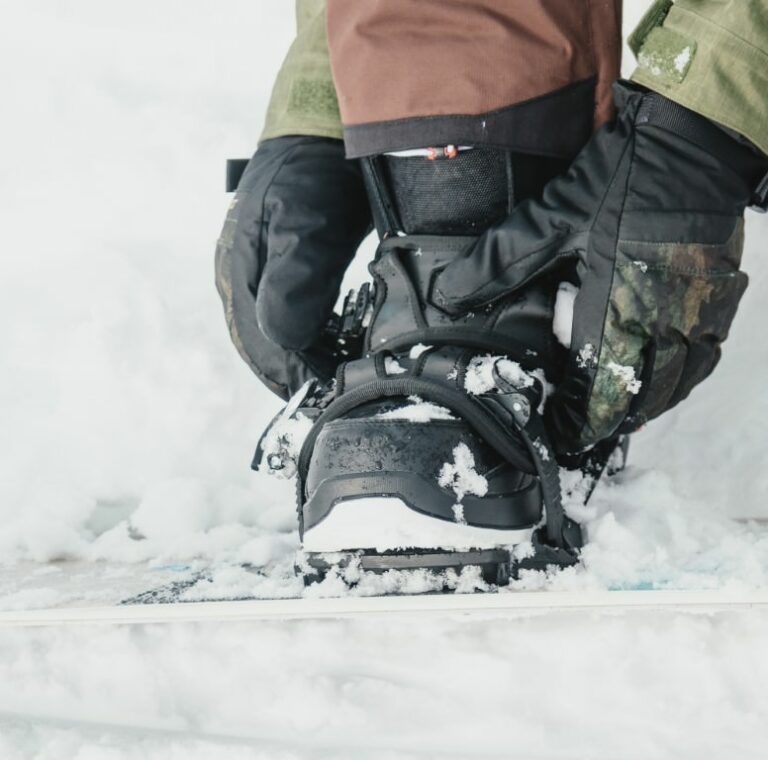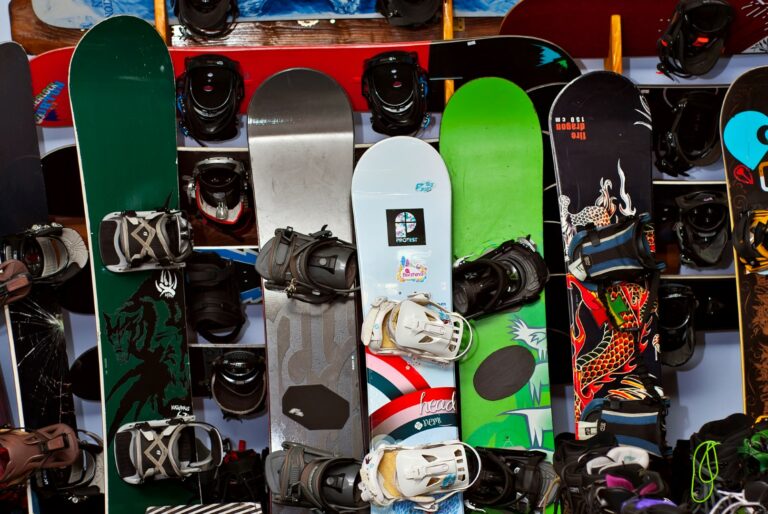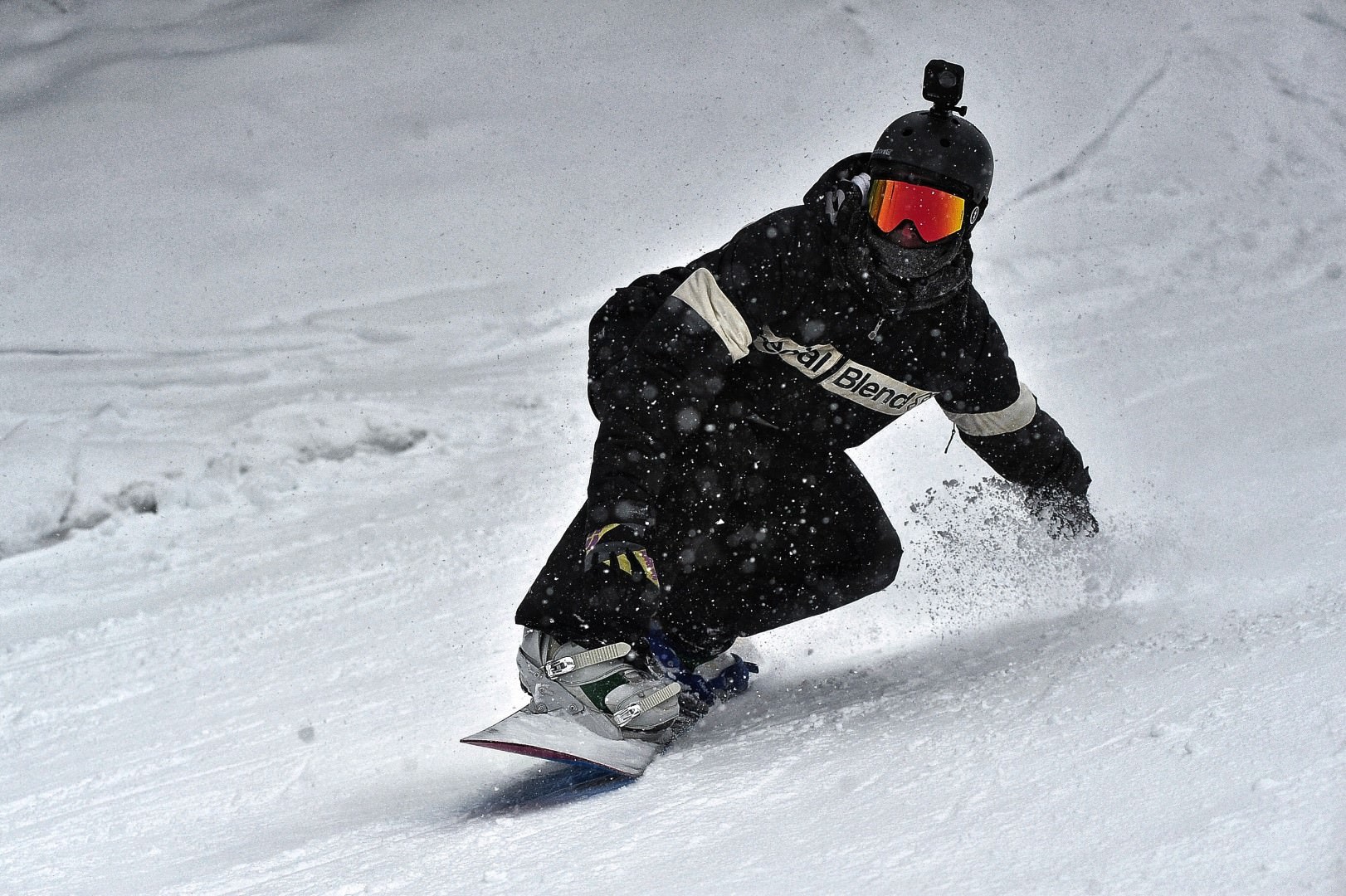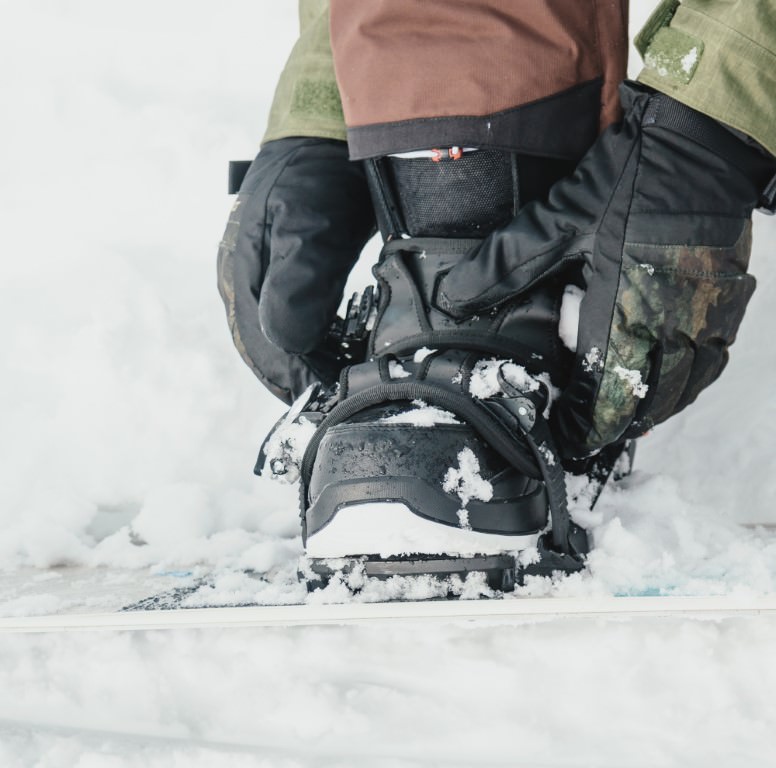How Often Does a Snowboard Need Waxing in General?
How often does a snowboard need to be waxed is a very subjective question. It will depend on several variables that revolve around how much you ride, the conditions you snowboard in and the type of snowboard you have. There is no such thing as waxing your snowboard too much. If you want to, you can wax your snowboard after every outing. However, if you negate this important maintenance step, not only will your snowboarding experience be affected, your snowboard could eventually see premature signs of aging.
In a perfect world, you’ll want to wax your snowboard after 4-5 days on the slopes. This helps the snowboard base stay saturated with wax which will prevent the snowboard from drying out. It’s also a lot easier to predict how the performance of the snowboard will be on any given day.
New to this type of maintenance step or interested in learning how to perform this easily at home? Here’s a great guide that goes over how to wax your snowboard like a pro.
Factors Influencing Wax Frequency
As stated above, there are several factors that can affect how often you should wax your snowboard for optimal performance. Some of these are well within your control, and others are condition and location dependent. Each factor affects the thin layer of wax on the snowboard and can affect how quickly the snowboard discharges wax or gets stripped off the base.
Temperature and Snow Conditions
This is one of the biggest factors that affects the longevity of the wax on your snowboard’s base. Colder temperatures tend to make snow crystals stronger. On a molecular level, cold snow crystals are much sharper and act like knives scraping off wax much faster. Regularly snowboarding in hard and icy conditions will also require more frequent wax jobs. This is also the case if you’re snowboarding a lot on artificial snow.
Very dry powder acts like sandpaper, drastically stripping away the wax on your snowboard. If you live in an area with lots of dry powder, you’ll want to wax more regularly. On the other hand, very wet and slushy conditions also strip off the warmer temperature waxes. Although snow crystals are more rounded when warmer, the amount of water increases the friction, causing the wax to also strip off. As a result, spring skiing and rainy days require more frequent waxing with warm temperature wax.
Snowboard Usage
Your riding style is another factor affecting how regularly you need to wax your snowboard. Aggressive riders who really push their boards will find the wax wears off more quickly. You won’t need to wax as often if you’re more of a cruiser.
Freestyle riders especially notice performance changes when their board is not waxed. Park features like boxes and rails quickly wear off a snowboard’s wax. This severely affects the snowboard’s performance when on these features. A sticky snowboard on rails and boxes becomes unpredictable and harder to control. If you’re a park rider concerned with performance, then you’re waxing every few days.

Speed and Performance Expectations
As a beginner or novice rider, you’re still new to the sport and probably not too concerned with small changes in performance and speed. You can get away with not waxing it for a bit longer. Upwards of 10 days without wax is pretty common.
Advanced and expert level riders notice changes in performance which could affect your riding or get in your head, distracting from what’s supposed to be a solid day on the slopes. This factor is more geared to a rider’s preference. If you don’t mind sacrificing a bit of speed and performance, you can wax it less often. However, if speed and performance are paramount to your riding experience, wax often.
How to Tell if Your Snowboard Needs Waxing
How can you tell when it’s time to break out the waxing kit? There are a few physical signs you can see, as well as some signals you’ll experience when snowboarding. Here’s what to look out for.
Dull and Dry-Looking Base
When your board has a good layer of wax on it, it’ll have a glossy, shiny look. As the wax wears off, the base will appear dull and dry, much like our skin without lotion.
White Patches
If you notice white areas, especially along the heel and toe edges of the snowboard, it’s a sign your board needs to be waxed. These white patches signify the start of base burn and are caused by snow slightly sanding down base material.
Performance Changes
One of the most noticeable signs that you need to wax your snowboard is you’re riding slower than your friends. You might notice your snowboard sticking or decelerating much faster than others around you. If you prefer effortlessly gliding down the slopes and not getting stuck on the flat section, keep your snowboard waxed regularly.
Waxing Requirements for Sintered vs. Extrude Bases
Snowboards are crafted with two different base types, Sintered and Extruded. The difference comes from the way it is manufactured.
Extruded Base
An extruded base is created by melting polymer pellets, pouring them into a mold and allowing it to cool. This process makes a base with significantly fewer pores than a sintered base. As a result, it doesn’t absorb wax but also doesn’t need to be waxed as much due to the lack of pores.
Extruded bases come standard on cheaper snowboards, are cheaper to repair and are more geared to people that don’t mind sacrificing some performance for a lack of maintenance.
Sintered Base
A sintered base uses the same polymer pellets but is formed by pressing the pellets together under immense pressure. This causes the base to be much more porous. More pores mean it can absorb a lot more wax. This manufacturing process generally makes it a faster and more durable snowboard.
The downside to this is more pores mean the snowboard base can dry out much faster when wax is stripped away from the base. As a result, regularly waxing a sintered base snowboard is more important for preserving the performance and life of a snowboard. Neglecting regular maintenance on these snowboards will snow more than an extruded base.

Can Waxing My Snowboard Too Often Damage It?
Is it possible to damage your snowboard from waxing too often? The short answer is no. As long as you know how to wax your snowboard and set the iron to the correct temperature, the chances of damaging your board are slim to none. Waxing your snowboard regularly is a really good thing. It keeps the base hydrated, improves performance and prevents minor base damage. It also protects the base from drying out.
Any possible damage doesn’t come from waxing itself rather than user error in the process. Overheating the snowboard base and scratching the base with a dirty iron are really the only issues that could arise when performing this maintenance.
What Are the Risks if I Ride a Snowboard Without Frequent Waxing?
If you decide to skip out on this relatively easy maintenance step, you will, at a bare minimum, notice a decrease in speed and performance. After about a dozen rides, you will definitely notice base burn around the edges.
The longer your snowboard goes without wax, the more the base will dry out. This can cause the base to ever so slightly shrink and puts tensile stress on the connected layers and edge. Eventually, something will give, and delamination and or edge separation will occur.
Waxing your snowboard also helps protect the snowboard’s base from minor scratches and abrasions. You could experience more minor scratches or run the risk of it developing more base scratches.
Conclusion
Snowboarding is an exhilarating sport, but it’s not exactly gentle on our gear. Understanding the wear and tear on a snowboard will help you better gauge when it’s time to wax your snowboard. Physical signs, performance changes and how you spend your time on snow can all be considered when determining how often to wax your snowboard.
If you truly can’t remember when it was waxed last, it’s probably best to take it to the shop or bust out your waxing kit. Regular waxing will keep your snowboard fast, protected and performing its best so you can perform at your best. Finally, remember that it’s generally recommended to wax a brand-new snowboard, too.
